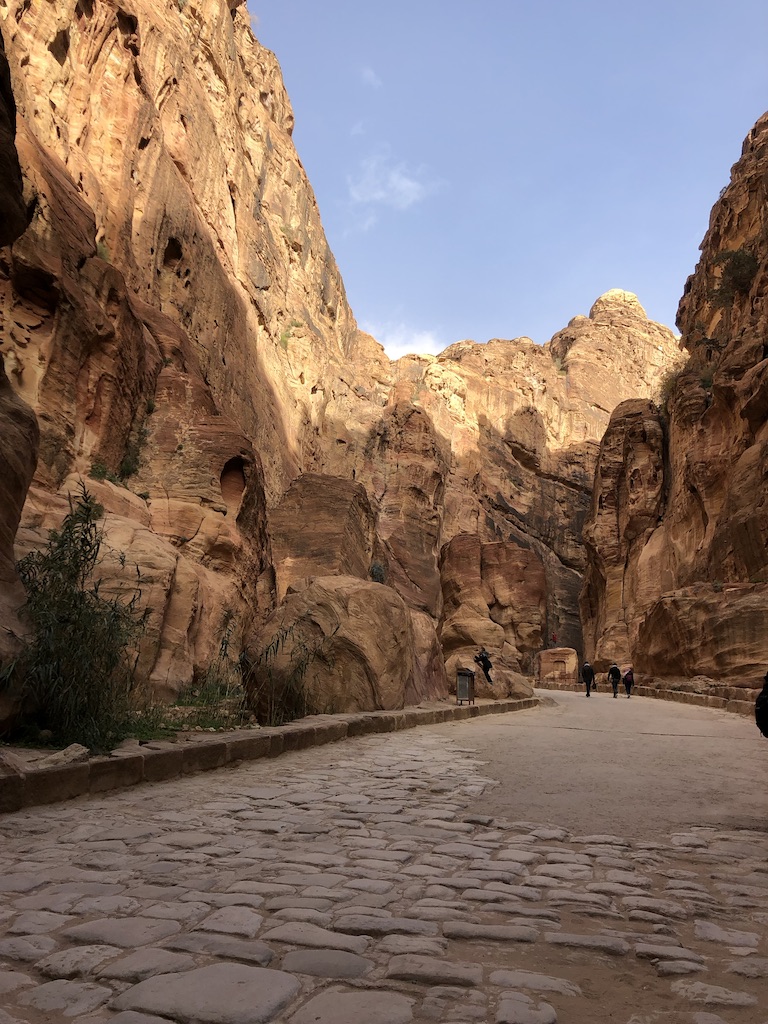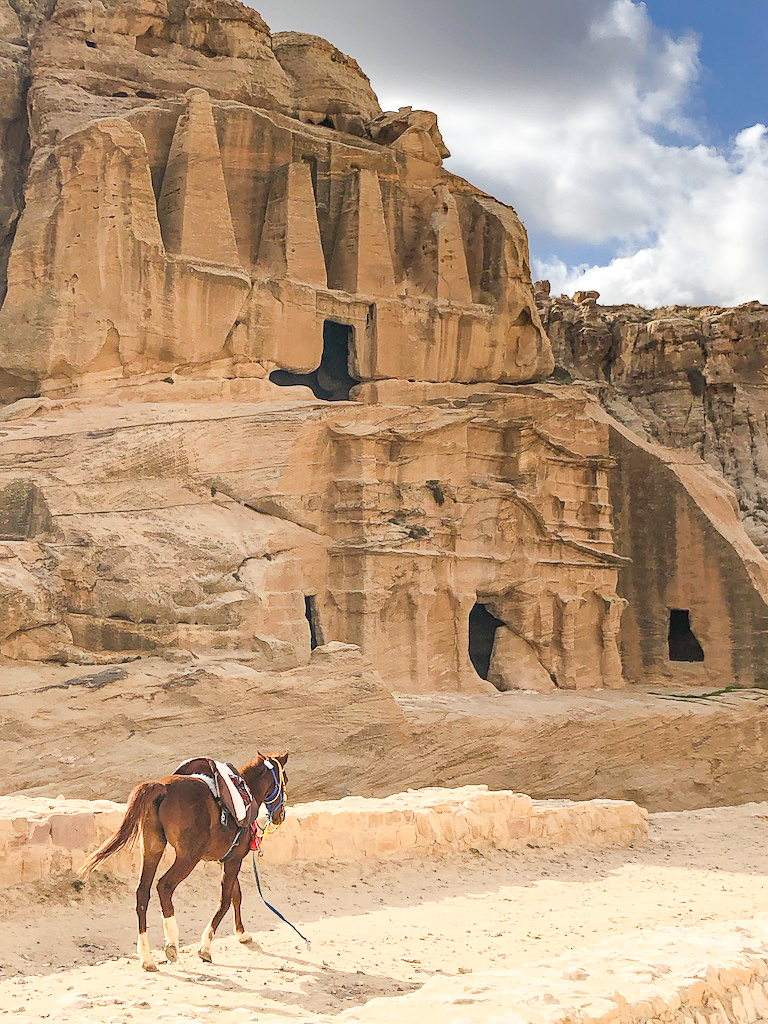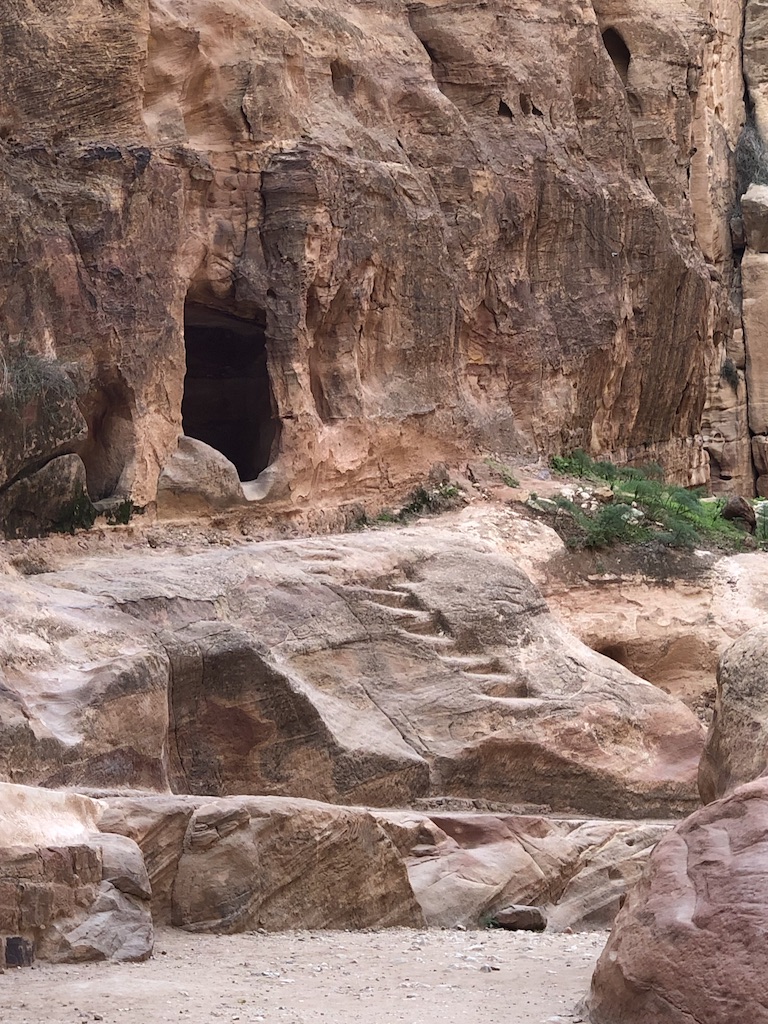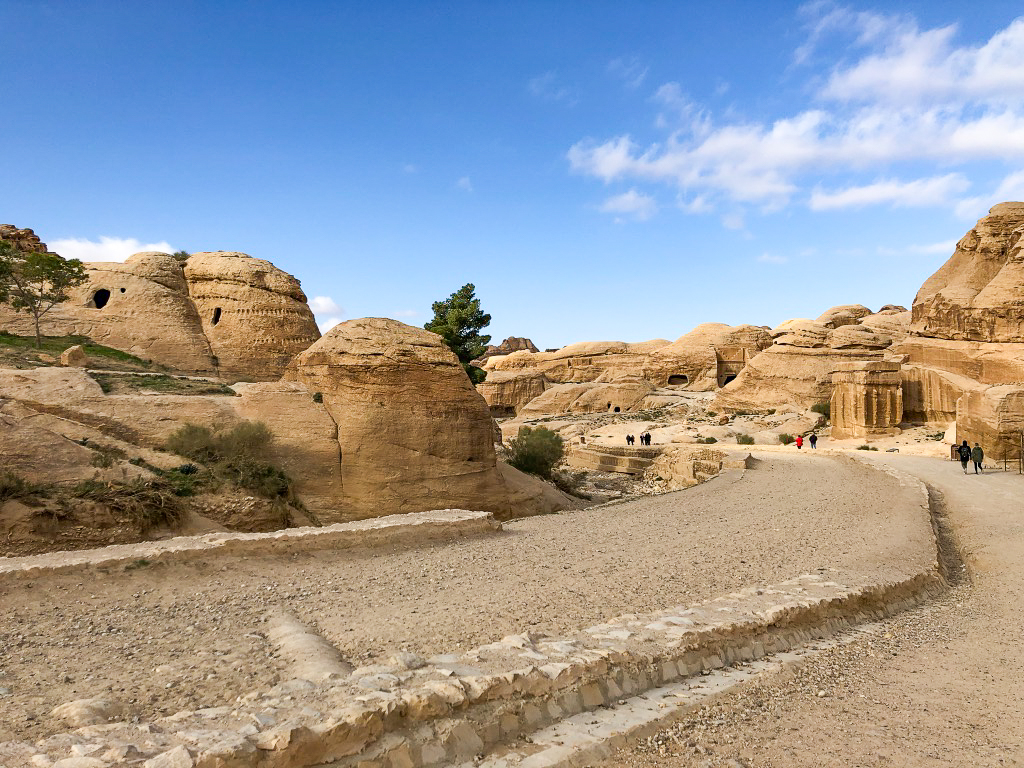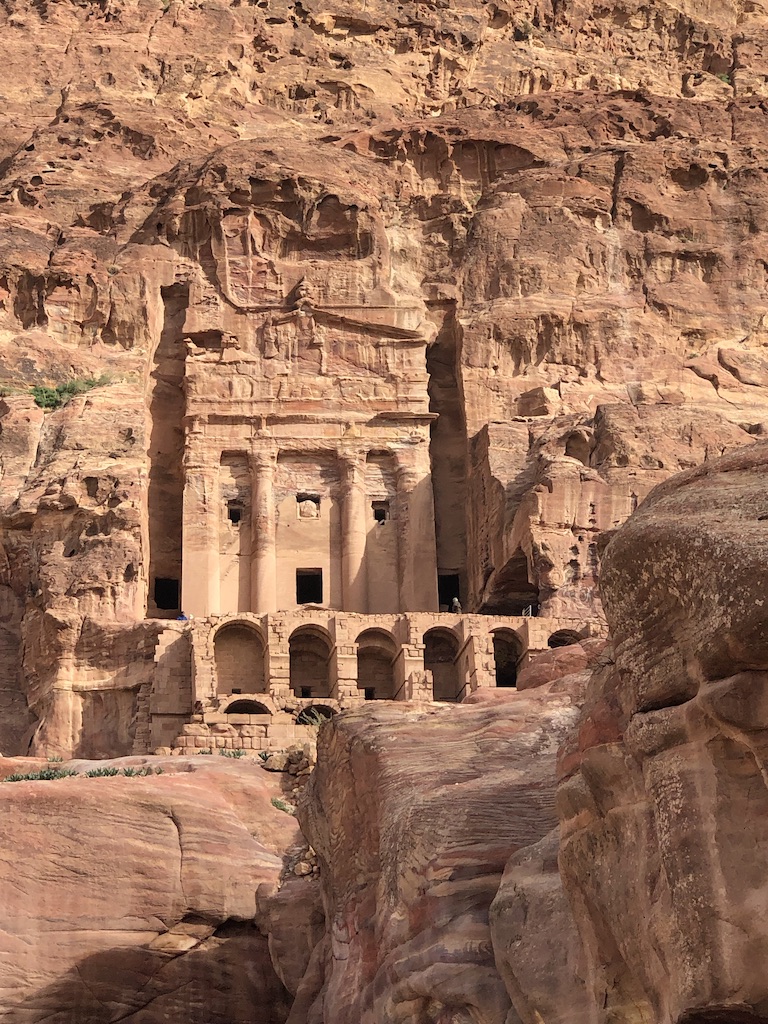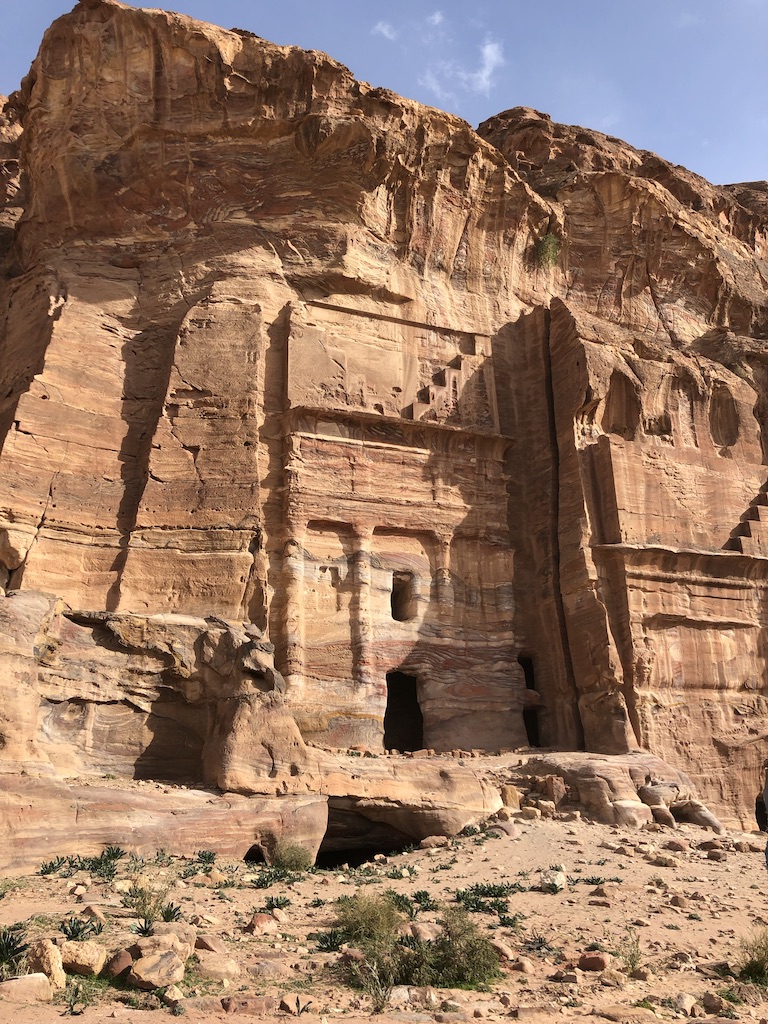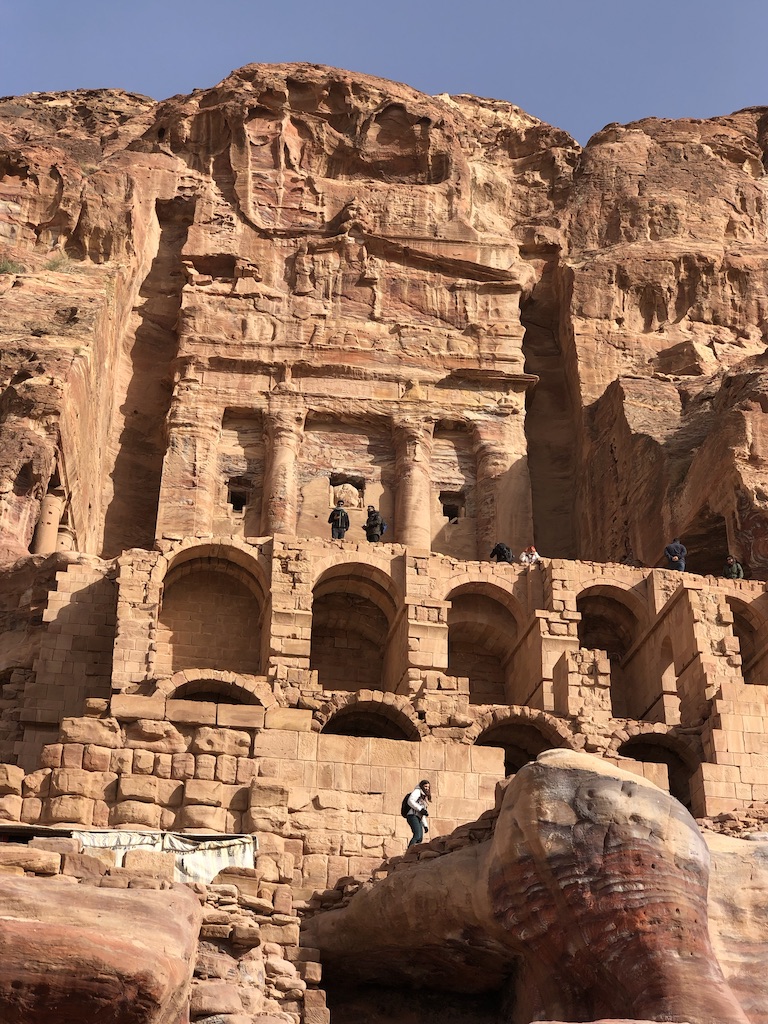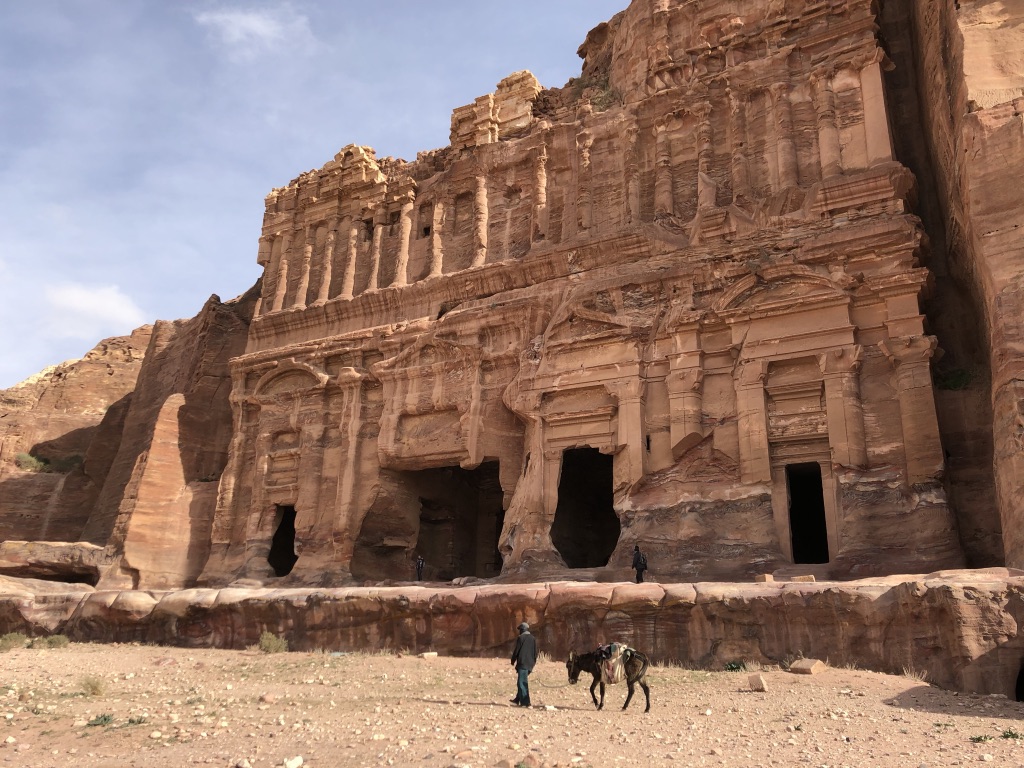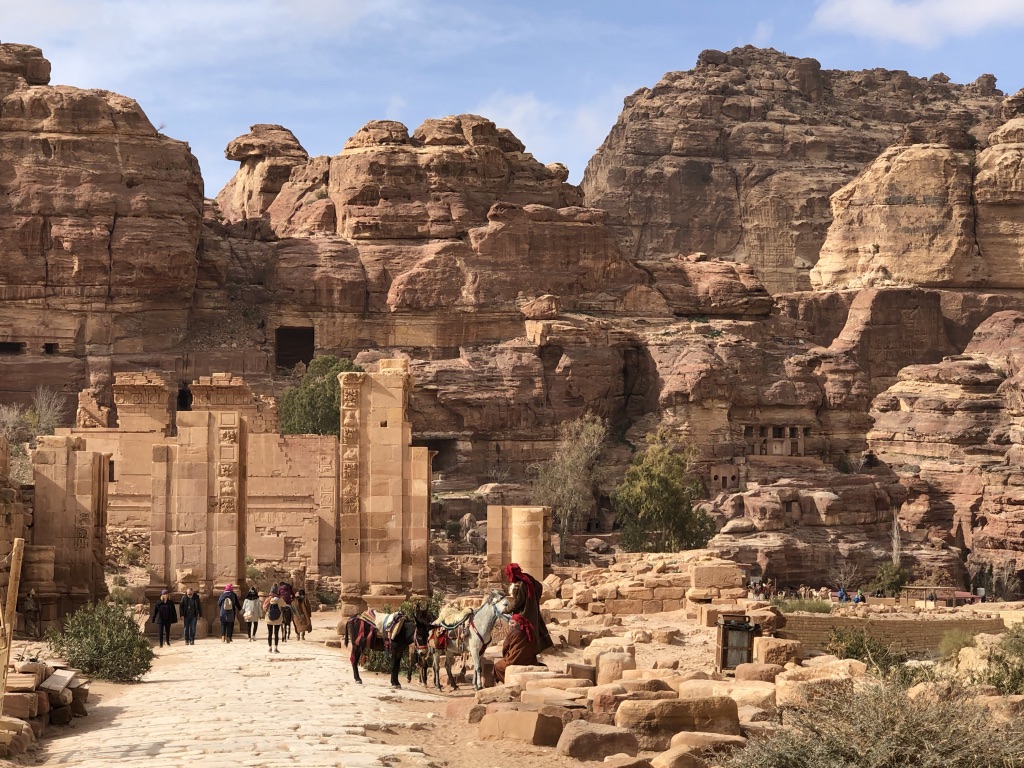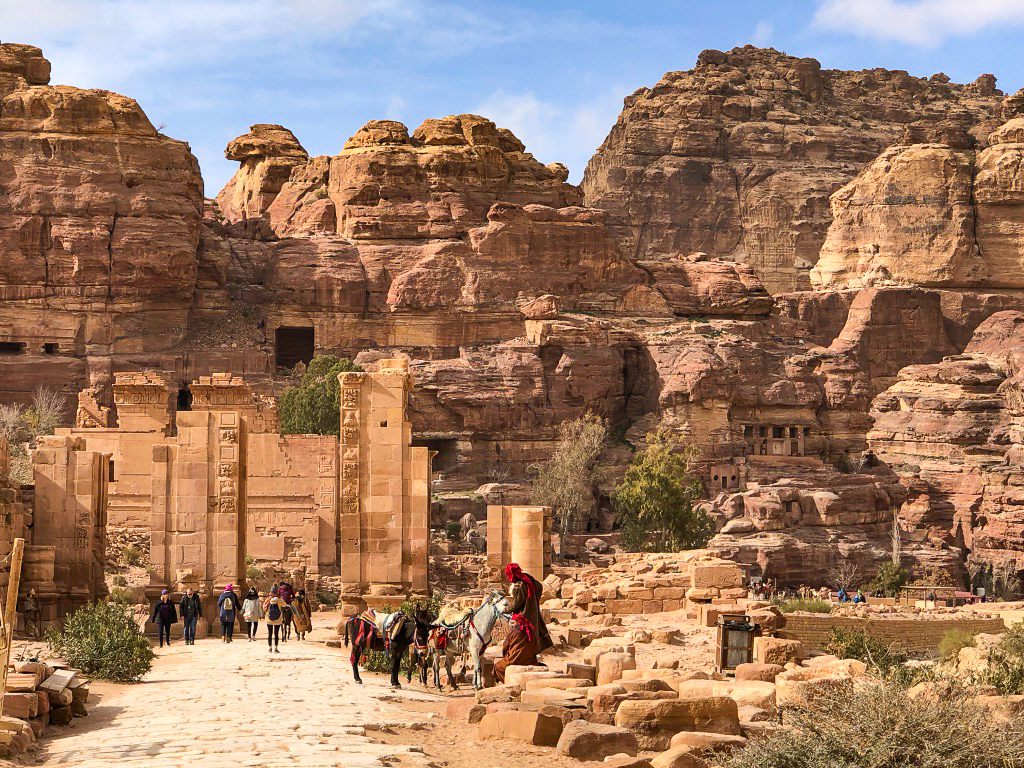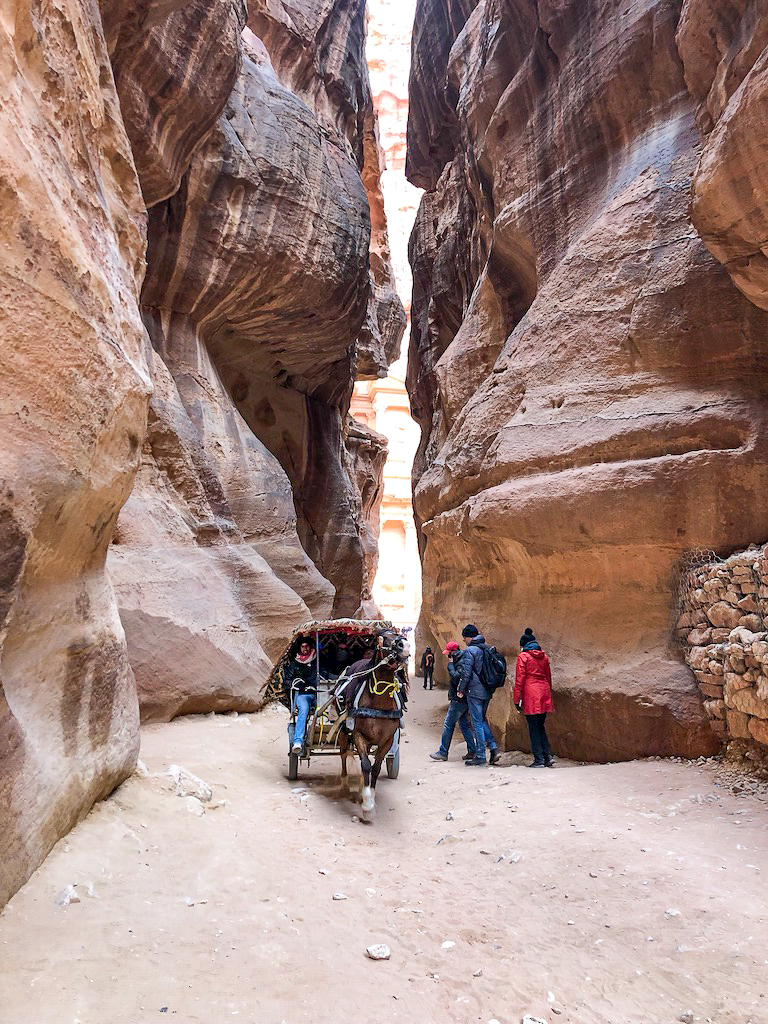After watching Petra: Lost City of Stone and reading Married to a Bedouin by Marguerite van Geldermalsen, Petra (“Rock”) was on my bucket list of places to see! Our trip to Egypt provided the perfect opportunity to extend our travels into Jordan and its Valley of Moses. After a quick flight from Cairo to Amman, our guide drove us to Petra where we checked into the Movenpick Resort hotel, located directly across from the visitor gates to Petra. After an early dinner we enjoyed a restful night before making our trek into Petra. We were excited to experience this ancient portal into the past.
We awoke to partly sunny skies and after a lovely breakfast with a waiter who had a quirky (dare I say annoying?) sense of humor we walked across the street and into the visitor entrance area. It was early January, the wind was blowing, and it was chilly. Our guide successfully gathered our small group of six friends and began to provide the overview of Petra and what we would experience. Eager to get moving so as to stay warm he continued his narrative as we began the walk down the Roman paved roadway into Petra. Along the way, we observed carved caves and steps as well as horses heading back to the center of Petra to find its owner or to pick up tourists.
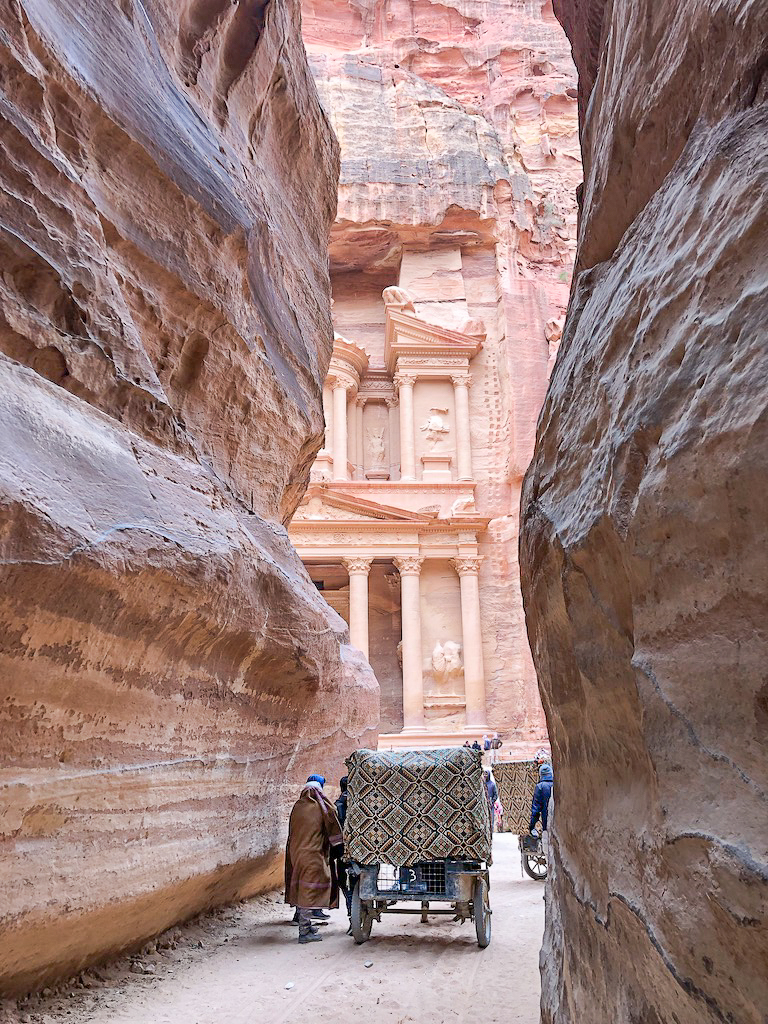
As we continued to walk the path became narrower and Petra’s rose-red stone hillsides became steeper until our guide announced that we were entering the Wadi Al-Sīq (a steep, narrow gorge). It was as though we had stepped into the Indian Jones and the Last Crusade movie where Harrison Ford rides a horse through this famous stone carved pathway into the Lost City of Petra and the entrance of the Treasury stone structure. As we made our way through the passage, a carriage was completing its journey. I was immediately transported back in time.
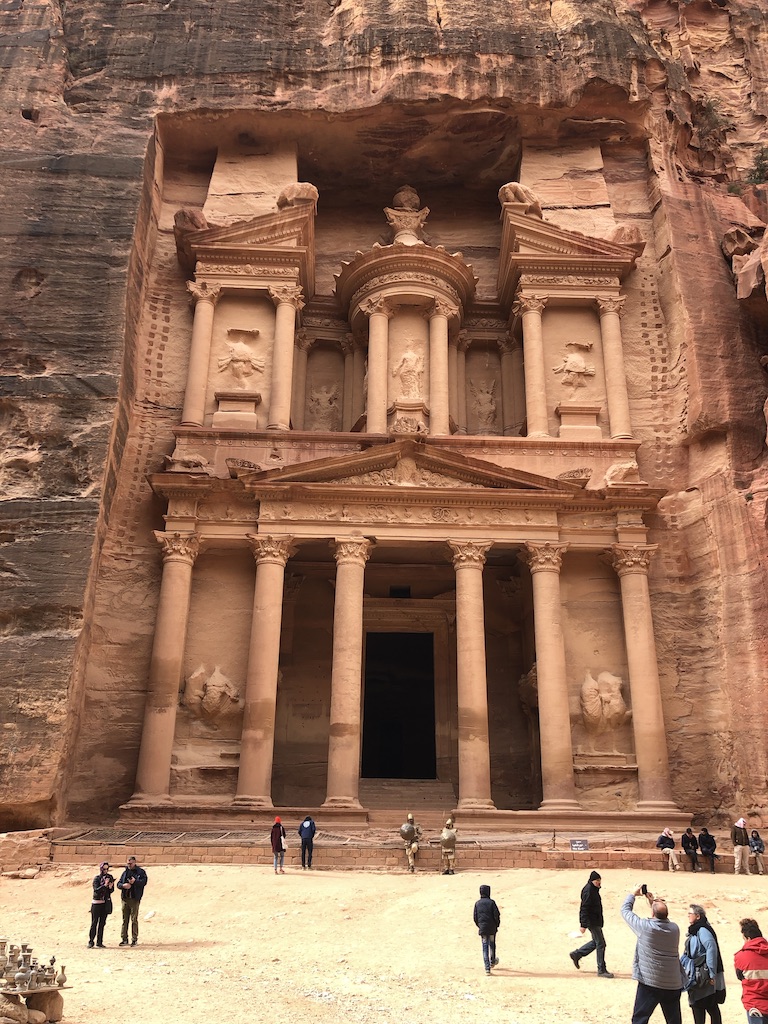
As we completed our walk through the Al-Siq the Treasury building consumed our view. With exclamations of delight and wonder we proceeded to record this memorable moment of our arrival into the Lost City of Petra.
Historians estimate that Petra, renowned for its rose-red stone temples and tombs, was founded 10,000 years ago. The city began to prosper in the 1st century BC when Petra became a trading city for spices, frankincense, and myrrh along the ancient spice route extending from China, Egypt, Greece, and India. As traders traveled throughout this part of the world, they would bring back architectural and cultural practices that soon began to make their way into the everyday life of the Nabataeans.
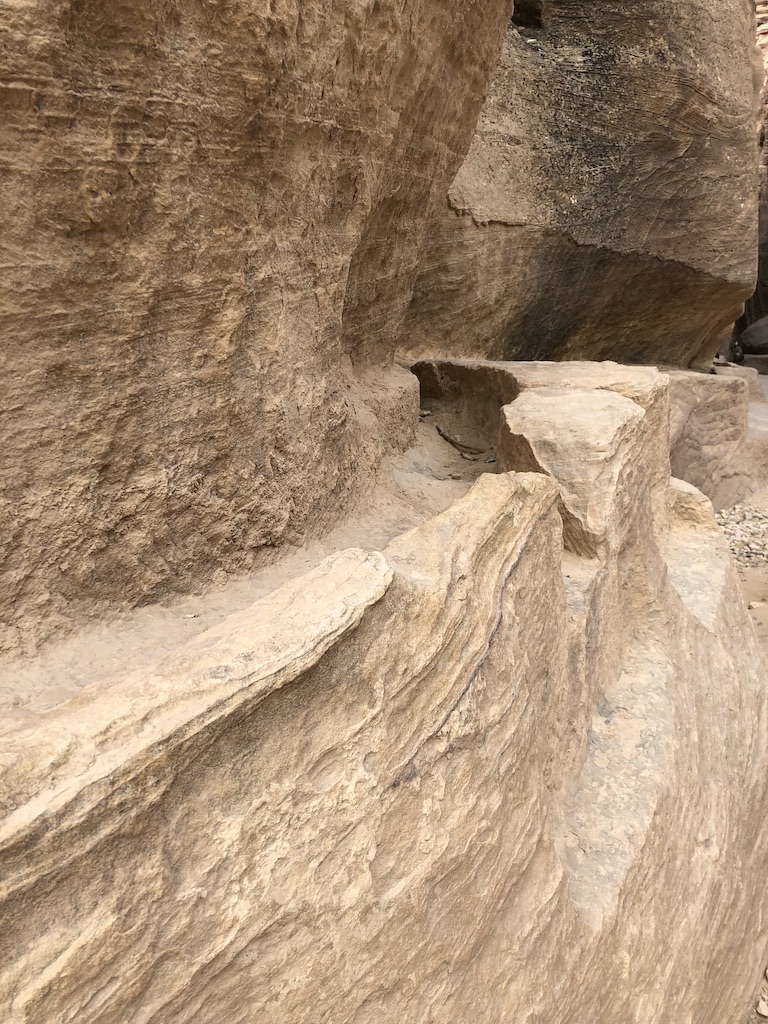
The capital of the Nabataean Empire, Petra is known for its extensive hydrological system, including dams, cisterns, rock-carved water channels (seen at right), and ceramic pipes. This system of managing water allowed this ancient civilization to prosper in an arid climate and reduced the destructive impact of flash floods. Unfortunately, as these structures erode the problem of flash flooding has returned and is a risk for tourists when they visit Petra in the winter months.
Petra was conquered by the Romans in 106AD but was allowed to remain independent while being taxed by the Romans who used Petra as a buffer against the desert tribes. Ultimately, Petra became a Roman province and was visited by Hadrian in 131AD. Many of the stone tomb structures were built during the time of Roman rule and reflect the classical architectural features.
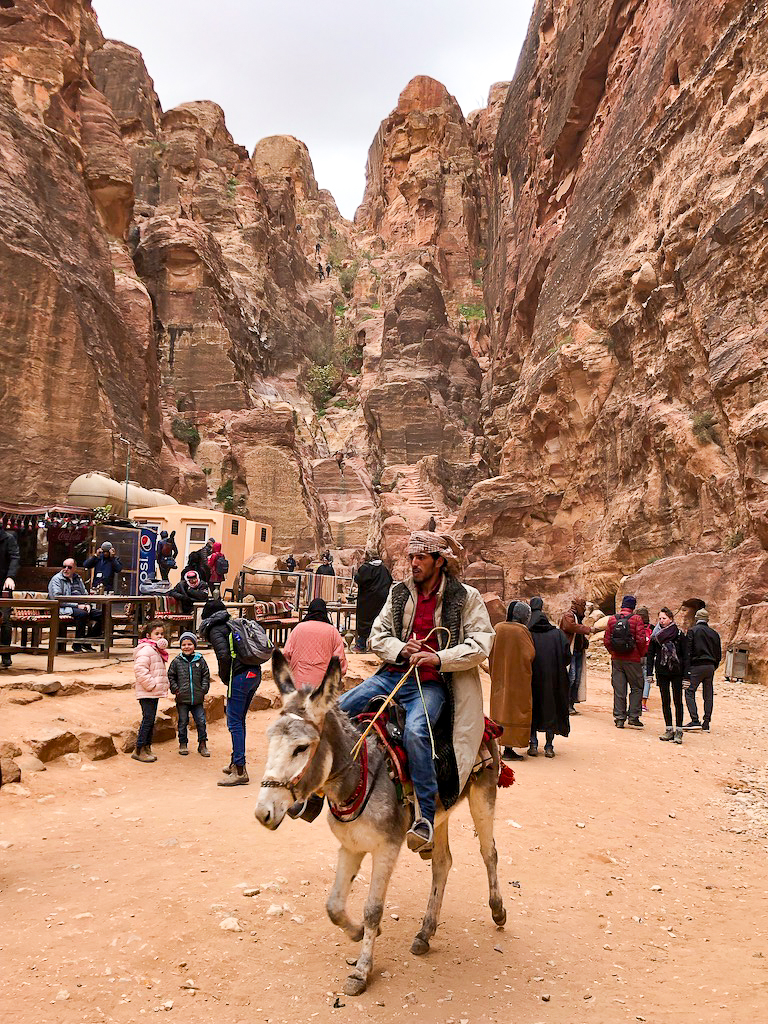
An earthquake in 363AD destroyed half of the city but Petra retained its viability well into the Byzantine Period. However, the change in trade routes declined Petra’s commercial viability. Another earthquake in 551AD was more devastating and resulted in almost total ruin. The city was ultimately abandoned with the exception of local bedouin (as seen in the photo to the left) who inhabited the stone carved structures and caves as their homes.
Petra was revealed to the world in 1812 by the Swiss explorer Johann Ludwig Burckhardt who was determined to rediscover Petra. A synthesis of the site and excavations began in 1905. The excavated remains, including the Roman laid stone roads, indicate a thriving city. However, despite all that has been excavated in the past 100 years, only one-percent of the city has been investigated and with each new discovery the history of Petra is being edited.
On December 6, 1985, Petra was designated a World Heritage Site and it was chosen by the Smithsonian Magazine as one of the 28 places you should visit before you die as it serves a portal into the past. As I looked back towards the Treasury, as we concluded our walk towards the hotel, I caught a glimpse of what it must have been like to live in Petra centuries ago.
Hindsight, we should have stayed in Petra one more night and spent a minimum of two full days in the Lost City. There are well marked hikes that take you up into the red-stone hillsides, providing vast views of the Valley of Moses and close up encounters with the tombs. Due to the extensive area we only had time to explore the primary valley sites. If you make this trip I highly recommend wearing comfortable shoes or hiking boots, clothes that can get dusty, and backpacks with water and a snack. Also, you need to be in reasonable shape as you will be on your feet all day, with the exception of perhaps lunch.
Mary Beth I have a passion for creating and experiencing unforgettable moments and sharing those with others. I hope that this story has helped you experience one of those moments.
